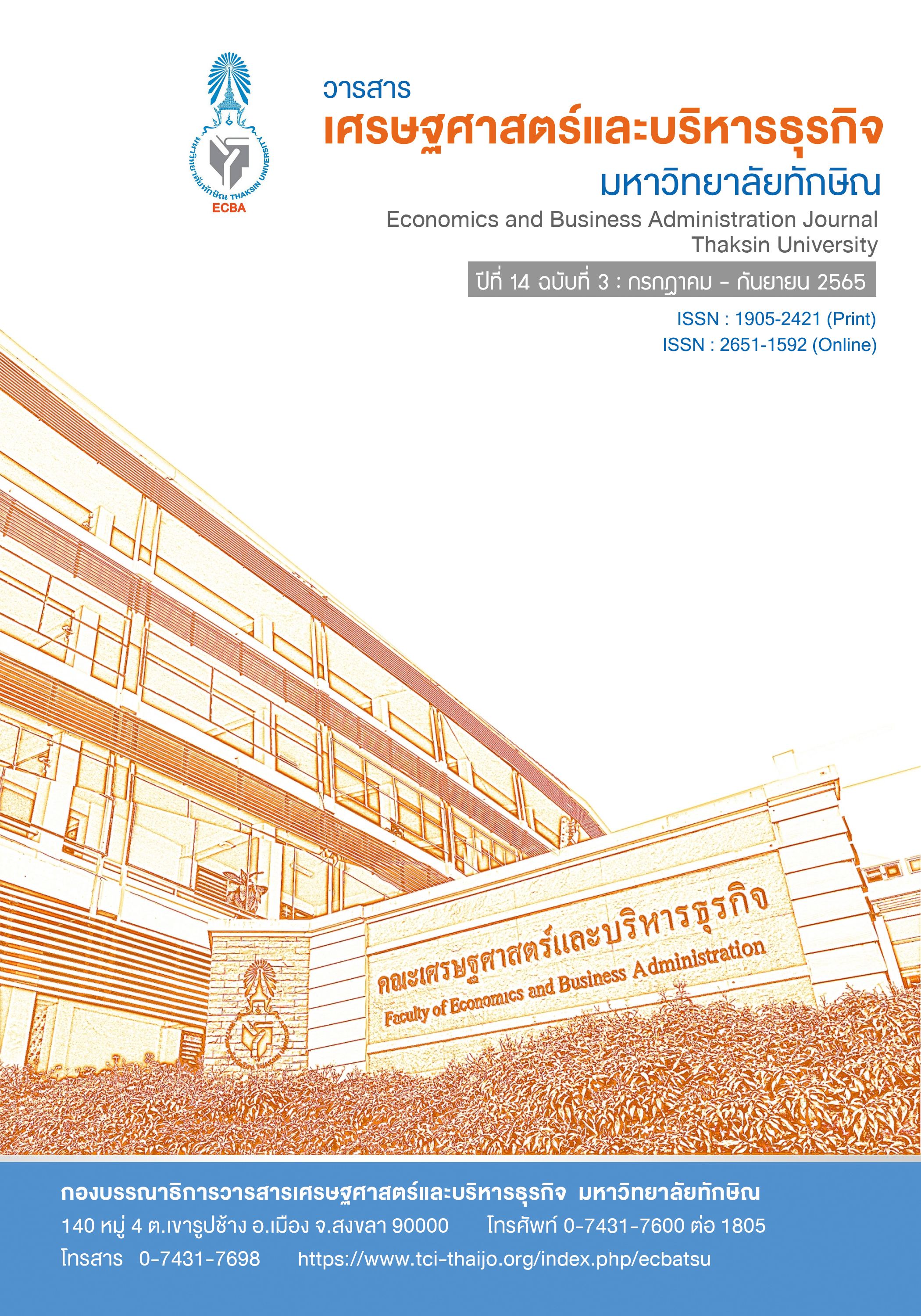The Influence of Brand Personality, Consumer’s Purchase Intention, and Attitude toward Brand on Brand Loyalty in Multi-Level Direct Sales
Keywords:
Brand personality, Consumer's Purchase Intention, Multi-Level Direct Sales, Attitude toward Brand, Brand LoyaltyAbstract
The purpose of this research is to study factor of brand personality, purchase intention which pass through the attitude towards brand to brand loyalty. The sample group used in the research is customer who purchase or used to buy products from a multi-level direct sales business where living in Bangkok, sample number of 460 cases. The research instrument is questionnaire, which use corroborative analysis techniques and structural equation analysis. The results showed that the structural equation model is consistent with the empirical data, with both harmonious indices at good level. It is a standard quality model. The study indicate that factor of brand personality, purchase intention which pass through the attitude towards brand to brand loyalty, has a positive effect. The multi-level direct sales business is characterized by selling products with a dealer. The dealer will also play the role of the customer. Make dealers aware of the product quality, brand identity and brand personality in a multi-level direct sales business. It's easier for dealers to make consumers aware, and build up confidence in the brand in the multi-level direct sales business. Until it became the purchase intention to buy the product of that brand. It will create a good attitude towards brand. From the perception of these factors will make consumers have the brand loyalty on the multi-level direct sales business which consumers will not change their mind to use products of other businesses.
References
Ajzen, I., & Fishbien, M. (1980). Understanding attitudes and predicting social behavior. NJ: Prentice Hall.
Allen, B., Leingpibul, S., Ross, T., & Foster, B.M. (2010). Brand equity's antecedent/consequence relationships in cross-cultural settings. Journal of Product & Brand Management, 19 (3), 159-169.
Ambroise, L., & Florence, V. P. (2010). The brand personality metaphor and inter-product stability of a specific barometer. Recherche et Applications Marketing (English edition), 25(2), 3–29.
Ashok, K., & Akshay, K. S. (2018). A study of multi-level marketing business with specific reference to Amway India. academia.edu, 9(3), 2348 – 9367.
Casaló, L.V., Flavián, C., & Guinalíu, M. (2010). Relationship quality, community promotion and brand loyalty in virtual communities: evidence from free software communities. International Journal of Information Management, 74(6), 1-17.
Chen, M.F. (2007). Consumer attitudes and purchase intentions in relation to organic foods in Taiwan.
Huang, C. C. (2017). The impacts of brand experiences on brand loyalty: mediators of brand love and trust. Management Decision, 55(5), 915-934.
Grohmann, B. (2009). Gender dimensions of brand personality. Journal of Marketing Research, 46(1), 105-119.
Kamalul, A. S., Mohan, T., & Goh, Y.N. (2018). Influence of consumers’ perceived risk on consumers’ online purchase intention. Journal of Research in Interactive Marketing, 12(3), 309-327.
Kiennukul, P. (2019). Communication in brand personality for using Integrated Marketing Communication of the Quiksilver Thailand (Master’s thesis). Faculty of Communication Arts, Dhurakijpundit University. Bangkok, Thailand.
Laroche, M., Habibi, M. R., & Richard, M.O. (2013). To be or not to be in social media: how brand loyalty is affected by social media. International Journal of Information Management, 33(1), 76-82.
Molinillo, S., Japutra, A., Nguyen, B., & Chen, C.S. (2017). Responsible brands vs active brands? An examination of brand personality on brand awareness, brand trust, and brand loyalty. Marketing Intelligence & Planning, 35(2), 166-179.
Park, W. C., MacInnis, D. J., Prieste r, J., Eisingerich, A. B., & Iacobucci, D. (2010). Brand attachment and brand attitude strength: conceptual and empirical differentiation of two critical brand equity drivers. Journal of Marketing, 74(6), 1-17.
Reza, J. M., & Samiei, N. (2012). The effect of electronic word of mouth on brand image and purchase intention: An empirical study in the automobile industry in Iran. Marketing Intelligence & Planning, 30(4), 460-476.
Reza, S., & Pool, J.K. (2017). Brand attitude and perceived value and purchase intention toward global luxury brands. Journal of International Consumer Marketing, 29, 74-82.
Shah, A. S., & Sayuti, M. N. (2011). Applying the Theory of Planned Behavior (TPB) in halal food purchasing. International Journal of Commerce and Management, 21(1), 8-20.
Susanne, B., & Louise, Y. (2014). Continuing the evolution of the selling process: A multi-level perspective. Industrial Marketing Management, 43(4), 543-552.
Thai Direct Selling Association. (2018). (Online) Review from: http://www.tdsa.org/content/21/1/
Yuksel, A., Yuksel,F., & Bilim ,Y. (2010). Destination attachment: Effects on customer satisfaction and cognitive, affective and conative loyalty. Tourism Management, 31(2), 274-284
Downloads
Published
How to Cite
Issue
Section
License
Copyright (c) 2022 Economics and Business Administration Journal Thaksin University

This work is licensed under a Creative Commons Attribution-NonCommercial-NoDerivatives 4.0 International License.




